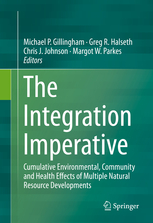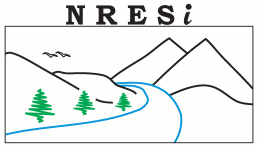-
Benson, J.F., D.A. Keiter, P.J. Mahoney, B.L. Allen, L.
Allen, F. Álvares, M.L. Anderson, S.M. Barber-Meyer, A.
Barocas, J.C. Beasley, L. Behrendorff, J.L. Belant, D.E.
Beyer Jr., L. Boitani, B.L. Borg, S. Boutin, E.E. Boydston,
J.L. Brown, J.K. Bump, J.D. Cepek, M.J. Chamberlain, Y.
Chenaux-Ibrahim, S.G. Cherry, D. Ćirović, P. Ciucci, H.D.
Cluff, S.M. Cooper, K.R. Crooks, D.L.J. Dupont, R.N. Fisher,
D. Fortin, T.D. Gable, E. García, E. Geffen, S.D. Gehrt,
M.P. Gillingham, D.C. Heard, M. Hebblewhite, J.W. Hinton,
A.T. Homkes, C.G. Howden, D. Huber, P.J. Jackson, K. Joly,
A. Kelly, M.J. Kelly, K.A. Kingdon, A. Kulkarni, J. Kusak,
G.W. Kuzyk, B.C. Lake, L. Llaneza, J.V. López-Bao, D.R.
MacNulty, A.A.D. McLaren, P.D. McLoughlin, E.H. Merrill,
K.J. Mills, N. Mitchell, S.A. Moore, M.A. Mumma, M.H.
Murray, M. Musiani, M. Nakamura, E.W. Neilson, L.M. Neufeld,
T.M. Newsome, J.K. Oakleaf, V. Palacios, M.M. Perdicas, T.
Perry, T.R. Petroelje, C.B. Piper, C.M. Prokopenko, L.R.
Prugh, S.P.D. Riley, H. Rio-Maior, G.H. Roffler, D. Rollins,
H. Sand, F.K.A. Schmiegelow, D.R. Seip, M.S. Sorum, C.C. St.
Clair, R. Steenweg, M.W. Strohbach, J. Tatler, M. Thaker,
C.A. Thompson, J.W. Turner, A.T. Vanak, E. Vander Wal, P.
Wabakken, S.E. Walter, S.C. Webster, T.J. Wheeldon, C.
Wikenros, S.K. Windels, J.K. Young, S. Zabihi-Seissan, B.
Zimmermann, and B.R. Patterson. 2024.
Intrinsic and
environmental drivers of pairwise cohesion in wild
Canis social
groups. Ecology (in press).
-
Breithaupt, K., R.V. Rea, M.P. Gillingham, D.A. Aitken, and
D.P. Hodder. 2024. Using winter diet composition and forage
plant availability to determine browse selection and
importance for moose (Alces alces) in a landscape modified
by industrial forestry. Forestry: An International Journal
of Forest Research, 2024, cpae019, https://doi.org/10.1093/forestry/cpae019
-
Lamb, C.T., S. Williams, S. Boutin, M. Bridger, D.
Cichowski, K. Cornhill, C. DeMars, M. Dickie, B. Ernst, A.
Ford, M.P. Gillingham, L. Greene, D.C. Heard, M.
Hebblewhite, D. Hervieux, M. Klaczek, B.N. McLellan, R.S.
McNay, L. Neufeld, B. Nobert, J.J. Nowak, A. Pelletier, A.
Reid, A.-M. Roberts, M. Russell, D. Seip, C. Seip, C.
Shores, R. Steenweg, S. White, H.U. Wittmer, M. Wong, K.L.
Zimmerman, and R. Serrouya. 2024. Effectiveness of
population-based recovery actions for threatened southern
mountain caribou. Ecological Applications. 34(4): e2965. https://doi.org/10.1002/eap.2965
-
Mumma, M.A., A.R. Bevington, S. Marshall, and M.P.
Gillingham 2024. Delineating wildfire burns and regrowth
using satellite imagery to assess moose (Alces alces)
spatial responses to burns. Ecosphere. (http://dx.doi.org/10.1002/ecs2.4793)
-
Breault, D., C.J. Johnson, M. Todd, and M.P. Gillingham.
2021.
Resource use by an apex mesocarnivore, Pacific marten, in a highly
modified forested island ecosystem.
Forest Ecology and Management. (https://doi.org/10.1016/j.foreco.2021.119167
)
|
-
Breault, D.N., C.J. Johnson, M. Todd, Melissa, S.S.
Verenitch, and M.P. Gillingham. 2021. Spatial and temporal
variability in the diet of Pacific marten (Martes
caurina) on Haida Gwaii: an apex predator in a highly
modified ecosystem. Canadian Journal of Zoology (https://doi.org/10.1139/cjz-2020-0076.)
|
-
Mumma, M.A., M.P. Gillingham, M. Scheideman, S. Marshall,
and C. Proctor. 2021. Regional moose (Alces alces) responses
to forestry cutblocks are driven by landscape scale patterns
of vegetation composition and regrowth. Forest Ecology and
Mangaement 481. (https://doi.org/10.1016/j.foreco.2020.118763)
|
-
Denryter, K.A., R.C. Cook, J.G. Cook, K.L. Parker, and M.P.
Gillingham. 2020. State-dependent foraging by caribou with
different nutritional requirements. Journal of Mammalogy
101:544-557. (https://doi.org/10.1093/jmammal/gyaa003)
|
-
Mumma, M., M.P. Gillingham, C. Johnson,
K.L. Parker. 2019.
Functional responses to anthropogenic linear features in a
complex predator-multi-prey system. Landscape Ecology
34:2575-2597. (https://doi.org/10.1007/s10980-019-00905-9
).
|
-
DeMars, C.A., R.
Serrouya. M.M. Mumma, M. Gillingham, R. McNay, and S. Boutin.
2019. Moose, caribou and fire: have we got it right yet?
Canadian Journal of Zoology 97:866-879 (https://doi.org/10.1139/cjz-2018-0319)
|
-
Serrouya, R., D.R. Seip, D. Hervieux, B.N. McLellan, R.S. McNay,
R. Steenweg. D.C. Heard, M. Hebblewhite, M.P. Gillingham, and S.
Boutin. 2019. Saving endangered species using adaptive
management. Proceedings of the National Academy of Sciences.
(www.pnas.org/cgi/doi/10.1073/pnas.1816923116).
|
-
Sittler, K.L., K.L. Parker, and M.P. Gillingham. 2019.
Vegetation and Prescribed Fire: Implications for Stone's Sheep
and Elk Journal of Wildlife Management
83:393-409.
(https://doi.org/10.1002/jwmg.21591)
|
- Mumma, M., M.P. Gillingham, C. Johnson, K.L. Parker, M. Watters.
2018. Predation risk for boreal woodland caribou in
human-modified landscapes: evidence of wolf spatial responses
independent of apparent competition. Biological Conservation
228:215-223. (https://doi.org/10.1016/j.biocon.2018.09.015)
|
|
|
-
Mumma, M.,
M.P. Gilli ngham, C. Johnson, K.L. Parker. 2018. Where beavers (Castor
canadensis) build: habitat quality predicts occurrence and
persistence. Canadian Journal of Zoology 96:897-904. (https://doi.org/10.1139/cjz-2019-0066)
|
- Mumma, M.A., M.P. Gillingham, C.J. Johnson, and K.L. Parker.
2017. Understanding predation risk and individual variation in
risk avoidance for threatened boreal caribou. Ecology and
Evolution 2017;00:1-12. (doi.org/10.1002/ece3.3563)
|
- McCulley, A.A., K.L. Parker, and M.P. Gillingham. 2017. Yukon
Moose: I. Seasonal resource selection by males and females in a
multi-predator boreal ecosystem. Alces 53:113-136.
|
-
McCulley, A.A., K.L. Parker, and M.P. Gillingham. 2017. Yukon
Moose: II.
Range
sizes, movement rates, and use of elevation and land cover by
males and females. Alces 53:137-157.
|
- Bridger, M.C., C.J. Johnson, and M.P. Gillingham. 2017. Working
with experts to quantify changes in the abundance of furbearers
following rapid and large-scale forest harvesting. Forest
Ecology and Management 402:194-203.
(https://doi.org/10.1016/j.foreco.2017.07.045)
|
- Higgins, R.J., M.P. Gillingham, and B.S. Lindgren. 2017.
Critical habitat elements, with an emphasis on coarse woody
debris, associated with ant presence or absence in the moist
cold sub-boreal forests of the interior of British Columbia.
Forests (Special Issue on Coarse Woody Debris of Forests in
a Changing World). Forests 8(4):129; (https://doi.org/10.3390/f8040129)
|
- Bridger, M.C., C.J. Johnson, and M.P. Gillingham. 2016.
Assessing cumulative impacts of forest development on the
distribution of furbearers using expert-based habitat modeling.
Ecological Applications 26:499-514. (https://www.jstor.org/stable/24701678)
|
- Sittler, K.L, K.L. Parker, and M.P. Gillingham. 2015.
Resource separation by Stone's sheep and elk on a landscape of
prescribed burns. Journal of Wildlife Management. 79: 591-604. (https://doi.org/10.1002/jwmg.869)
|
|
|
|
|
- Hanley, T.A., M.P. Gillingham, and K.L. Parker. 2014.
Composition of Diets Selected by Sitka Black-tailed Deer on
Channel Island, Central Southeast Alaska. Portland, OR: U.S.
Department of Agriculture, Forest Service, Pacific Northwest
Research Station. Research Note PNW-RN-570, 23 pp.
|
|
|
- Hawkshaw, S.C.F, M.P. Gillingham, and M. Shrimpton. 2014.
Habitat characteristics affecting occurrence of a fluvial
species in a watershed altered by a large reservoir. Ecology of
Freshwater Fish 23:383-394. [doi: 10.1111/eff.12092].
|
- Le Saout, S., S. Chollet, S. Chamaillé-Jammes, L. Blanc, S.
Padié, T. Verchere, T. Gaston, M. Gillingham, O. Gimenez, K.
Parker, D. Picot, H. Verheyden, and J.-L. Martin. 2013.
Understanding the paradox of deer persisting at high numbers in
heavily browsed habitats. Wildlife Biology20(3):122-135.
|
- Gillingham, M.P., 2013. A Review of A Primer of Ecological
Statistics (2nd Edition). The American Statistician. 67(4):264.
|
- Martin, Jean-Louis, Simon Chollet, and Michael Gillingham.
2013. Odocoileus hemionus (Columbia and Sitka
black-tailed deer). In Invasive Species Compendium. Wallingford,
UK: Centre for Agricultural Bioscience International
|
- Cadsand, B., M. Gillingham, D. Heard, K. Parker, and G.
Mowat. 2013. Potential Effects of Heliskiing on Mountain Goats:
Recommendations for Updated Guidelines. NRESi Research Extension
Note Number 8, University of Northern British Columbia, Prince
George, BC., 14 pp.
|
- Milakovic, B., K.L. Parker, D.D. Gustine, R.J. Lay, A.B.D.
Walker, and M.P. Gillingham. 2012. Seasonal habitat use and
selection by grizzly bears in northern British Columbia.
Journal of Wildlife Management 76:170-180.
|
- Cadsand, B.A., B. Jex, and M.P. Gillingham. 2012. Modified
clover trap for capturing goats in northwest British Columbia.
Northern Wild Sheep and Goat Council 17th Biennial Symposium
Proceedings.
|
- Witter, L.A., C.J. Johnson, B. Croft, A. Gunn, and M.P.
Gillingham. 2011. Behavioural trade-offs in response to external
stimuli: time allocation of an Arctic ungulate during varying
intensities of harassment by parasitic flies. Journal of Animal
Ecology. 81:284-295.
|
- Milakovic, B., K.L. Parker, D.D. Gustine, R.J. Lay, A.B.D.
Walker, and M.P. Gillingham. 2011. Habitat selection by a focal
predator (Canis lupus) in a multi-prey ecosystem of the northern
Rockies. Journal of Mammalogy 92: 568-582.
|
- Klingenberg, M.D., B.S. Lindgren, M.P. Gillingham, and B.H.
Aukema. 2010. Anthropogenic response to an outbreak of mountain
pine beetle creates new challenges from Warren root collar
weevil. Journal of Applied Ecology 46:566-574.
|
- Goddard, A.D., R.D. Dawson, and M.P. Gillingham. 2009.
Habitat selection by nesting and brood-rearing sharp-tailed
grouse in Northeastern British Columbia, Canada. Canadian
Journal of Zoology.
|
- Parker, K.L., P.S. Barboza, and M.P. Gillingham. 2009.
Nutrition influences on survival and reproduction of cervids.
Functional Ecology 23:57-69.
|
- Helle, S., A.L. Fredeen, P.M. Rutherford, G. Halseth, M.P.
Gillingham, K. Parker, and H. Massicotte. 2009. Biomass energy
in central British Columbia: framing the issues. Natural
Resources and Environmental Studies Institute Occasional Paper
No. 4, University of Northern British Columbia, Prince George,
B.C. 35 pp.
|
- Psyllakis, J.M. and M.P. Gillingham. 2009. Using forest
structure and composition to predict the occurrence of
vertebrate species in Douglas-Fir forests of British Columbia.
Biological Conservation 142:1427-1441.
[doi:10.1016/j.biocon.2009.02.008.]
|
- Ayotte, J.B., K.L. Parker, and M.P. Gillingham. 2008. Use of
natural licks by four ungulate species in north-central British
Columbia. Journal of Mammalogy 89:1041-1050.
|
- Gillingham, M. P. 2008. Ecology of black-tailed deer in
north coast environments. Proceedings of a symposium: Lessons
from the Islands: Introduced Species and What They Tell Us About
How Ecosystems Work RGIS 2002 Conference, 2-5 October 2002.
|
- Gillingham, M.P., and K.L. Parker. 2008. Differential
habitat selection by moose and elk in the Besa-Prophet Area of
northern British Columbia. Alces 44:41-63.
|
- Gillingham, M.P., and K.L. Parker. 2008. The importance of
individual variation in defining habitat selection by moose in
northern British Columbia. Alces 44: 7-20.
|
- Rea, R.V., and M.P. Gillingham. 2008. Effects of plant
compensation across sites on regression estimates of shoot
biomass and length. Alces 44:21-30.
|
- Johnson, C.J., and M.P. Gillingham. 2008. Sensitivity of
species-distribution models to error, bias, and model design: An
application of resource selection functions for woodland
caribou. Ecological Modelling 213:143-155.
|
- Jones, E.S., M.P. Gillingham, D.R. Seip, and D.C. Heard.
2007. Comparison of seasonal habitat selection between
threatened woodland caribou ecotypes in central British
Columbia. Rangifer 17:111-128.
|
- Rea, R.V., and M.P. Gillingham. 2007. Initial Effects of
Brush Cutting and Shoot Removal on Willow Browse Quality. Range
Ecology and Management 60:566-573.
|
- Psyllakis, J.M., and M.P. Gillingham. 2007. Considerations
when validating vertebrate species-structure models.
Proceedings of the Monitoring the Effectiveness of Biological
Conservation Conference, 2-4 November, 2004. Richmond, British
Columbia (available from
http://www.forrex.org/events/mebc/papers.html).
|
- Walker, A.B.D., K.L. Parker, M.P. Gillingham, D.D. Gustine,
and R.J. Lay. 2007. Habitat selection and movements of Stone's
sheep in relation to vegetation, topography and risk of
predation. Ecoscience 14:55-70.
|
- Ayotte, J.B., K.L. Parker, J.M. Arocena, and M.P.
Gillingham. 2006. Chemical composition of lick soils: functions
of soil ingestion by four ungulate species. Journal of Mammalogy
87:878-888.
|
- Baxter, D.J.M, J.M. Psyllakis, M.P. Gillingham, and E.L.
O'Brien. 2006. Behavioural response of bats to perceived
predation risk while foraging. Ethology 112:977-983.
|
- Gustine, D.D., K.L. Parker, R.J. Lay, M.P. Gillingham, and
D.C. Heard. 2006. Calf survival of woodland caribou in a
multi-predator ecosystem. Wildlife Monograph 165, 32 pp.
|
- Gustine, D.D., K.L. Parker, R.J. Lay, M.P. Gillingham, and
D.C. Heard. 2006. Interpreting resource selection between scales
among individual woodland caribou in winter. Journal of Wildlife
Management 70:1602-1614.
|
- Johnson, C.J., K.L. Parker, D.C. Heard, and M.P. Gillingham.
2006. Unrealistic animal movement rates as behavioural bouts: a
reply. Journal of Animal Ecology 75:303-308.
|
- Jones, S.J., D.C. Heard, and M.P. Gillingham. 2006. Temporal
Variation in Stable Carbon (δ13C)
and Nitrogen (δ15N) Isotopes of
Grizzly Bear Guardhair and Underfur. Wildlife Society Bulletin
34:1320-1325.
|
- Schroff, A.Z., B. S. Lindgren, and M.P. Gillingham. 2006.
Random Acts of Weevil: a spatial analysis of Hylobius
warreni
attack on Pinus contorta var. latifolia in the
Sub-boreal Spruce Zone of Northern British Columbia. Forest
Ecology and Management 227:42-49.
|
- Walker, A.B.C, K.L. Parker, and M.P. Gillingham. 2006.
Behaviour, habitat associations and intrasexual difference of
Stone's sheep ewes. Canadian Journal of Zoology. 84:1187-1201.
|
- Johnson, C.J., and M.P. Gillingham. 2005. An evaluation of
mapped species distribution models used for conservation
planning. Environmental Conservation 32:117-128.
|
- Johnson, C.J. and M.P. Gillingham. 2004. Mapping
uncertainty: sensitivity of wildlife habitat ratings to
variation in expert opinion. Journal of Applied Ecology
41:1032-1042.
|
- Jones, E., M. Gillingham, D. Heard, D. Seip and G. Watts.
2004. Habitat use of threatened caribou at the transition zone
from mountain to northern ecotype (extended abstract). in T.D.
Hooper (ed.), Proceedings of the Species at Risk 2004 Pathways
to Recovery Conference. March 2-6, 2004, Victoria, B.C.
|
- Johnson, C.J., K.L. Parker, D.C. Heard, and M.P. Gillingham.
2002. A multiscale behavioral approach to understanding the
movements of woodland caribou. Ecological Applications
12:1840-1860.
|
- Johnson, C.J., K.L. Parker, D.C. Heard, and M.P. Gillingham.
2002. Movement parameters of ungulates and scale-specific
responses to the environment. Journal of Animal Ecology
71:225-235.
|
- Gillingham, M.P., K.L. Parker, and T.A. Hanley. 2001.
Habitat use by black-tailed deer in relation to intake rate.
Alces 37:339-352.
|
- Rea, R.V. and M.P. Gillingham. 2001. The impact of the
timing of brush management on the nutritional value of woody
browse for moose (Alces alces). Journal of Applied
Ecology 38: 710-719.
|
- Harrison, D.G., M.P. Gillingham, and G. Stenhouse. 2001.
Comparing Methods to Determine Distribution and Movement
Patterns of Forest-dwelling Mountain Goats. Proc. Bienn.
Symposium of the North American Wild Sheep and Goat Council 11:
81-95.
|
- Gillingham, M.P., K.L. Parker, and T.A. Hanley. 2000.
Partial consumption of Shield Fern, Dryopteris dilatata,
Rhizomes by Black-tailed deer, Odocoileus hemionus sitkensis,
and its potential impacts. Canadian Field Naturalist 114:21-25.
|
- Parker, K.L., M.P. Gillingham, T.A. Hanley, and C.T.
Robbins. 1999. Energy and protein balance of free-ranging
black-tailed deer in a natural forest environment. Wildlife
Monographs 143. 48 pp.
|
- Colescott, J.H., and M.P. Gillingham. 1998. Reaction of
moose (Alces alces) to snowmobile traffic in the Greys
River Valley, Wyoming. Alces 34: 327-338.
|
- Gillingham, M.P., K.L. Parker, and T.A. Hanley. 1997. Forage
intake by large herbivores in a natural environment: bout
dynamics. Canadian Journal of Zoology 75:1118-1128.
|
- Lovvorn, J.R. and M.P. Gillingham. 1996. Food dispersion,
search strategies, and foraging energetics: a mechanistic
synthesis for field studies of avian benthivores. Ecology. 77:
435-451.
|
- Lovvorn, J.R. and M.P. Gillingham. 1996. A Spatial
Energetics Model of Cadmium Accumulation by Diving Ducks.
Archives of Environmental Contamination and Toxicology
30:241-251.
|
- Parker, K.L., M.P. Gillingham, T.A. Hanley, and C.T.
Robbins. 1996. Foraging efficiency: energy expenditure versus
energy gain in free-ranging black-tailed deer. Canadian Journal
of Zoology 74:442-450.
|
- Parker, K.L., M.P. Gillingham, and T.A. Hanley. 1993. An
accurate technique for estimating forage intake of tractable
animals. Canadian Journal of Zoology 71:1462-1465.
|
- Parker, K.L., G.D. DelGiudice, and M.P. Gillingham. 1993. Do
urinary urea nitrogen and cortisol ratios of creatinine reflect
body fat reserves in black-tailed deer? Canadian Journal of
Zoology 71:1841-1848.
|
- Parker, K.L., M.P. Gillingham, T.A. Hanley, and C.T.
Robbins. 1993. Seasonal patterns in body weight, body condition,
and water transfer rates of free-ranging and captive
black-tailed deer (Odocoileus hemionus sitkensis) in
Alaska. Canadian Journal of Zoology 71:1397-1404.
|
- Gillingham, M.P., and K.L. Parker. 1992. Simple timing
device increases reliability of recording telemetric activity
data. Journal of Wildlife Management 56:191-196.
|
- Gillingham, M.P., and D.R. Klein. 1992. Late-winter activity
patterns of moose (Alces alces gigas) in western
Alaska. Canadian Journal of Zoology 70:293-299.
|
- Parker, K.L., and M.P. Gillingham. 1990. Estimates of
critical thermal environments for mule deer (Odocoileus
hemionus hemionus). Journal of Range Management 43:73-81.
|
- Parker, K.L., R.G. White, M.P. Gillingham, and D.F.
Holleman. 1990. Comparison of energy metabolism in relation to
daily activity and milk consumption by caribou and muskox
neonates. Canadian Journal of Zoology 68:106-114.
|
- Gillingham, M.P., and F.L. Bunnell. 1989. Effects of
learning on food selection and searching behaviour of deer.
Canadian Journal of Zoology 67:24-32.
|
- Gillingham, M.P., and F.L. Bunnell. 1989. Black-tailed deer
foraging bouts: dynamic events. Canadian Journal of Zoology
67:1353-1362.
|
- Gillingham, M.P., M.R. Speyer, S. Northway, and R.
McLaughlin. 1987. Feeding preference and its relation to
herbivore repellent studies. Canadian Journal of Forest Research
17:146-149.
|
- Gillingham, M.P. and F.L. Bunnell. 1985. Reliability of
motion-sensitive radio-collars for estimating activity of
black-tailed deer. Journal of Wildlife Management 49:951-958.
|
- Bunnell, F.L., and M.P. Gillingham. 1985. Foraging
behaviour: dynamics of dining out. pp. 53-79 In R.J. Hudson and
R.G. White (eds.). Bioenergetics of Wild Herbivores. CRC Press,
Boca Raton, FL.
|


